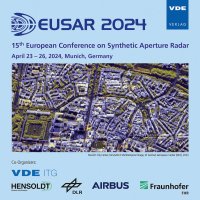Repeat Pass InSAR at Enceladus- A Geophysics Mission Concept to Understand Dynamics and Habitability
Konferenz: EUSAR 2024 - 15th European Conference on Synthetic Aperture Radar
23.04.2024-26.04.2024 in Munich, Germany
Tagungsband: EUSAR 2024
Seiten: 6Sprache: EnglischTyp: PDF
Autoren:
Rosen, Paul A.; Benedikter, Andreas; Horst, Stephen J.; Hurst, Kenneth J.; Krieger, Gerhard; Prats-Iraola, Pau; Rodriguez-Cassola, Marc; Simons, Mark; Oveisgharan, Shadi
Inhalt:
Saturn's icy moon Enceladus is tidally locked in an eccentric orbit, and experiences periodic tidal forcing every 33 hours as it orbits the planet. These tidal forces deform the icy shell, creating active cryovolcanic jet activity localized along major fault structures referred to as the 'Tiger Stripes" located within the South Polar Terrain. This activity and associated tectonic motions transform the surface, making Enceladus a natural laboratory for studying the geophysics of an ocean world using geodetic techniques, if one could measure its dynamic shape. Furthermore, it has been shown that geodetic observations of surface strain can directly constrain spatial variations in ice shell thickness. Repeat Pass Interferometric Synthetic Aperture Radar (lnSAR) is a technique that has been used in Earth orbiting missions to create wide-area, fineresolution maps of surface displacement, transforming the field of geodesy. The technique requires that the satellite be placed in an exact repeat orbit around target body to ensure coherence of the surface over time. Recent analysis suggests that a satellite can be placed in a stable repeating orbit around Enceladus, leading to the possibility of developing a repeatpass lnSAR mission to measure the dynamics and structure of Enceladus. Understandjng the geophysical environment of Enceladus, what leads to its surface features and changes over time, can provide insights into the energy budget of the body, its thermal state, and internal structure, all essential elements in understanding habitability of the moon. An InSAR-capable radar instrument design must balance wavelength, bandwidth, power, and other system parameters to address the observational uncertainties associated with the unusual radar scattering behavior of Enceladus, as well as orbit control limitations. This paper describes some of these design trades.


